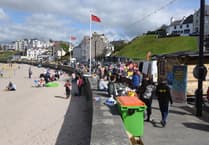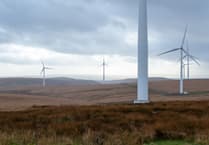Continuing our beginner’s guide to renewable energy from experts at ESC (Energy & Sustainability Centre IOM), let’s take a look at the different types and some of the pros and cons.
Solar
Solar panels use what scientists call ‘photovoltaic’ cells to turn the sun’s rays into electricity.
Compared to other types of renewable energy, solar can often be the most practical and cheapest form of green energy available to local home and business owners.
With high electricity prices, solar is an attractive option because the time it takes to pay back on the investment is relatively short, typically around 10 years.
Despite what you may think about the Island’s weather, the Manx climate is suited to solar power.
The Peel Group has published plans for a large-scale solar park here on the island – click here to find out more. Other local businesses already have their own solar power systems – one example being Zurich at Isle of Man Business Park which now provides around 70% of its office’s annual electricity needs.
One of the issues with solar energy is that during the winter and at night it is unlikely that enough power will be generated to meet demand whilst in the summer there may be too much energy produced at certain times. The way to deal with this is to store surplus energy, for example in batteries or hot water or hydro-electric schemes for when it is needed.
Wind
Wind turbines can be located on land or offshore.
Turbines can range from small units which may be around 15 metres high, up to turbines larger than 100 metres high which are capable of powering whole towns.
A wind farm comprises a number of wind turbines designed and built to make optimum use of the wind conditions at the specific site.
Wind turbine design has advanced significantly over the last several years, with the capacity of a modern onshore turbine typically in the order of 5 MW.
Approximately 25 such turbines would generate the same amount of electricity that the Island uses over the year.
However, the power is not necessarily generated when it is needed because wind strength and electricity consumption are unrelated. This is where energy storage again plays a role, because it’s an effective way of matching power supply to demand.
Click here for a video which shows the amazing engineering and scientific expertise which is behind today’s modern wind power technology. The Isle of Man is already planning onshore and offshore wind farms.
Hydro-electricity
This is generated in power stations that use the force of water flowing from a reservoir to drive turbines which generate electricity.
The Isle of Man has a small hydro-electric power plant in the Sulby Valley.
One of the world’s most spectacular hydro-electric schemes is at Niagara Falls in Canada. Click here for a video to learn more about this type of power source.
Hydro-electric facilities can also be used to store energy in what is known as ‘pumped hydro storage’.
This involves using surplus power from a wind farm or solar park to pump water from a lower reservoir to store it in an upper reservoir.
When there is not enough wind or sun, then the stored water can be made to flow back from the upper to the lower reservoir through turbines to generate power.
Look out for the more Ask An ESC-pert articles coming soon.




